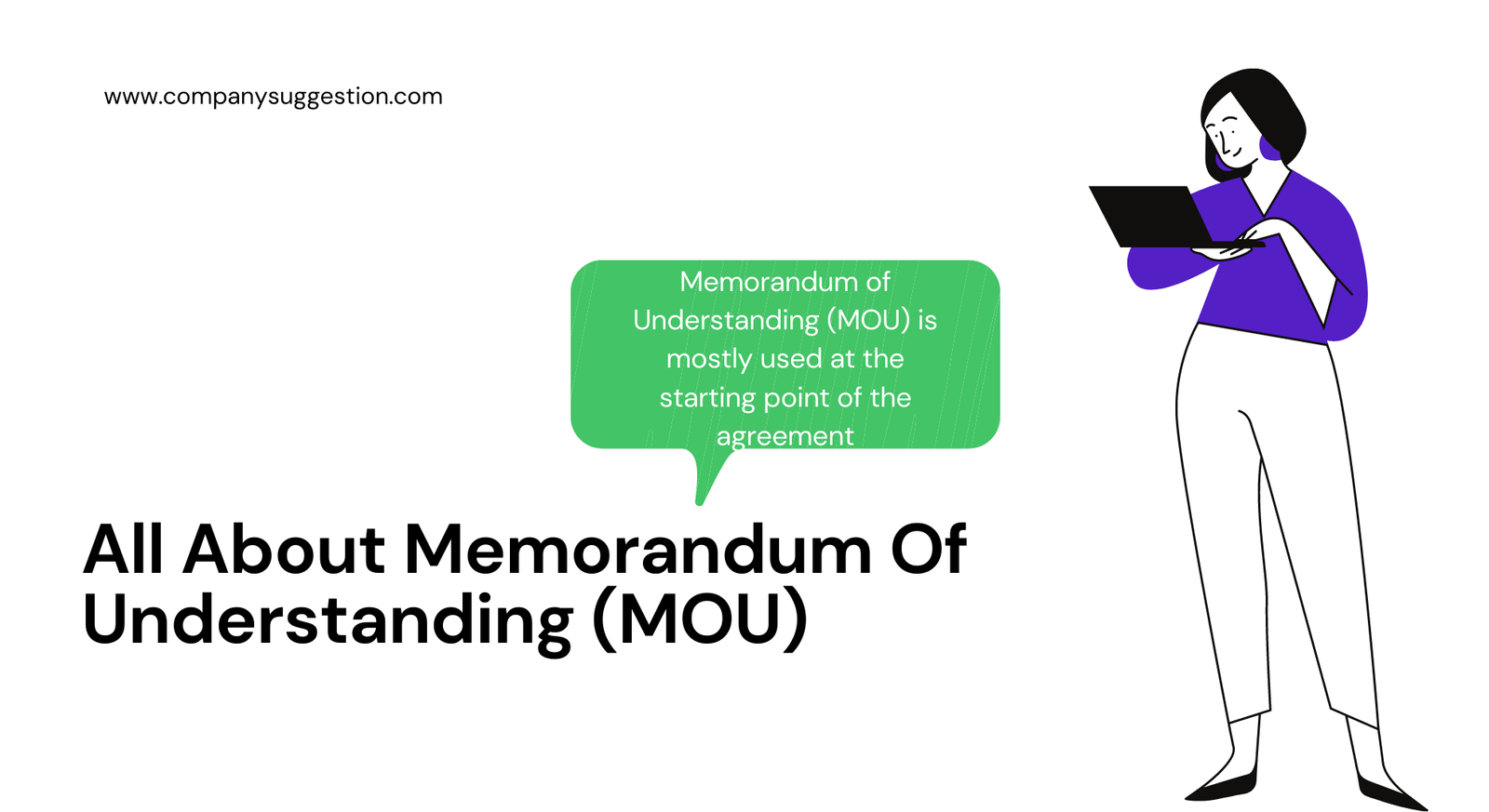Introduction
A Memorandum of Understanding or MOU is a non-binding agreement between two or more parties that express each party’s intention to take an action, managing a business transaction or form a new partnership. It is not legally binding but shows the willingness of both the parties to move forward with a contract. An MOU is used when both the parties plan to work together.
This document can be seen as a starting part of any negotiation as it clarifies the scope and purpose of the contract between the parties. A Memorandum of Understanding can be termed as Letter of Intent (LOI). In fact, a Memorandum of Understanding, Memorandum of Agreement or Letter of Intent are virtually the same. It is used in business transactions seriously.
Key takeaways
- A memorandum of Understanding is an agreement that describes the scope and contents of the contract between the parties that two or more parties have reached.
- It communicates the mutually accepted presumptions of the parties those are involved in the negotiation.
- The Memorandum of Understanding is mostly found in International relations.
It is mostly used when contracts of the parties are on the planning stage whereas used in U.S and state government agencies. This agreement express that the parties in the negotiation have reached an understanding and looking forward to move on.
Is Memorandum of Understanding legally binding?
A Memorandum of Understanding is formally a legal document but cannot be said that it is a legal binding document. Although, it is not a legal binding document. The MOU is used to show the parties willingness those involved in a negotiation to take an action for looking forward to move on. This document shows as a primary or foundation part of a negotiation. These types of agreements are mostly used in:
- Business opportunity discussions
- Business opportunity negotiations
- Treaty negotiations
Memorandum of Understanding is basically identical as Letter of intent and Memorandum of Agreement under law. It is the same as letter of intent under United state law.
MOU is not legally binding agreement but can include a clause that becomes legally binding. That clause can held be liable on all the parties those are in terms of negotiation. These elements that MOU legally binding are:
- an offer
- an acceptance of an offer
- legally binding intention
- consideration (each party gets benefits from the contract such as payment or any other type of compensation)
Contents included in Memorandum of Understanding (MOU)
The following are some contents that are included in Memorandum of Understanding (MOU):
- Objectives of the MOU
- Name of the parties involved in the agreement
- Purpose of the agreement
- Responsibilities of the parties
- Each party’s obligation
- Duration of MOU
- Estimated date when the agreement becomes effective
- Signatures of the all the parties
- Terms of an agreement
- Confidentiality clause
- Conditions for termination of MOU
- Arbitration clause
- Indemnity clause
- Other miscellaneous clause
These clauses may be inserted or omitted with the mutual consent of the parties depending upon the importance of the transactions under MOU.
Advantages of Memorandum of Understanding (MOU)
The following are the advantages of Memorandum of Understanding (MOU):
- Describing the responsibilities of all the parties involved in negotiation.
- It is better than verbal commitments.
- It shows as an evidence of intent.
- The parties create a good faith intention to deal with a work.
- A formal document is easy and convenient to form.
- It is easier than formal legal binding contract.
- It is possible to avoid obligations under International law when MOU is signed by the countries.
Conclusion:
Memorandum of Understanding (MOU) is mostly used at the starting point of the agreement. During this agreement, it describes the information on roles and responsibilities of the parties on how different situations will be managed.
MOU helps in solving all the disputed between the parties before each party enter into an agreement. We have a team of legal experts, you can solve your queries on company suggestion.













